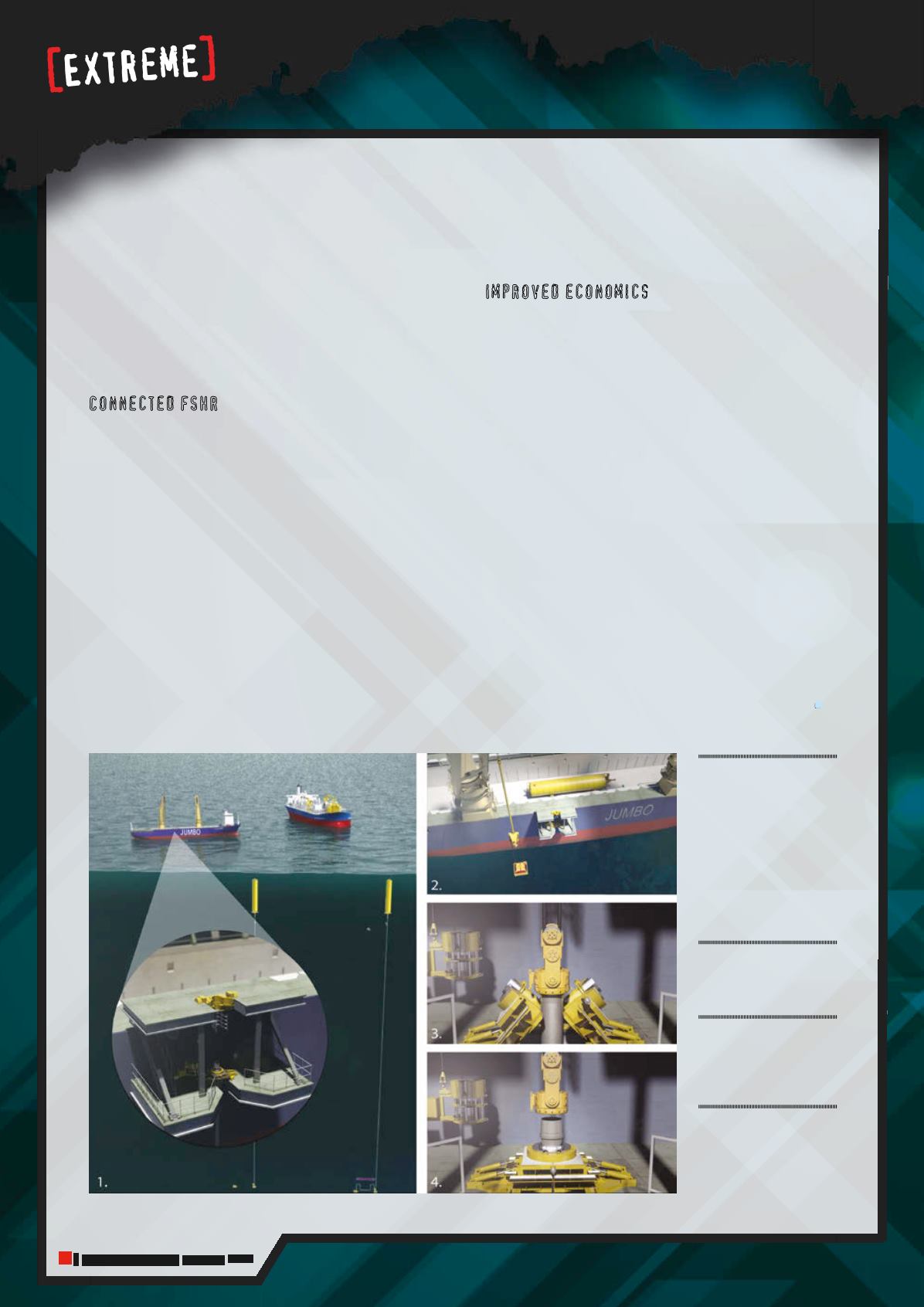
70
|
Oilfield Technology
January
2016
1.
Heavy lift transports
riser components
to location. Vessel
is outfittedwithan
installationplatformon
the side of the vessel,
completewith spider
table andmake/ break
tool to connect riser
solutions.
2.
Bottomriser assembly
is upendedand clump
weight is attached.
3.
Pipe handling tool
moves bottomriser
assembly to spider table
on the side of the vessel.
4.
Riser is hung-off
in the spider table
utilising the integrated
hang-off shoulder on the
connector.
has been completed which demonstrates the ability
of the connector to meet or exceed DNV C1 curves for
fatigue. Using connected riser pipe extends the design
life of the riser, even in high fatigue areas like the
hang-off and touch-down locations.
Fast and reliable make-up: The connectors can be
made up in a matter of minutes, are reusable, and the
installed pipe can be recovered in reverse sequence,
and can be cleaned, inspected, and stored for reuse.
Connected FSHR
GMC’s mechanically connected FSHR is designed to
eliminate the costly challenges of existing FSHR designs.
By using this system, a FSHR can be installed with the same
heavy lift vessel already required for transport of buoyancy
cans, utilising a simple assembly platform on the side of
the vessel to snap the pipe section together and lowering
onto the seafloor foundation. This eliminates the need for a
separate heavy lift vessel for fabrication and installation of
the riser, thus reducing vessel costs. By removing welding
of the riser sections offshore, installation time and required
offshore personnel decreases significantly, resulting in a
quicker and much more cost-effective solution.
Additionally, by utilising the mechanical connector and
onshore fabrication this enables the use of high strength
steel pipe in lieu other standard pipe grade. The higher
strength pipe can be used to decrease the overall weight
of the riser and thus reduce the size of the buoyancy can
required for the top tension. This enables cost savings of up
to 10%.
Improved economics
Analysis was performed on a three riser field development
installed in 2500 m water depth, with a FSHR length of
2300m, using connected triple joint strands. By reducing
the number of vessels required for installation, the number
of offshore personnel required for welding and installation,
and the overall installation time, the economic advantage
was in excess of 33% of total costs for engineering,
procurement, and installation. Furthermore, overall
installation time could also be reduced significantly.
Additionally, by utilising the connected FSHR design,
operators can mitigate project risk by standardisation of
the design and use of pre-manufactured riser joints.
The mechanically connected FSHR, while economically
attractive for any field, can have a significant impact on
large field developments.
While barriers to change exist and risk aversion
surrounding new technologies is known in the offshore
industry, the current price climate has created a demand
for cost reductions and more efficient operations. With
the development of the mechanical connector, and the
connected free standing hybrid riser solution many
developments can again become economically feasible.


